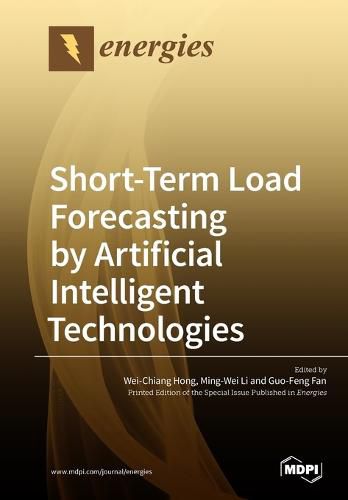Readings Newsletter
Become a Readings Member to make your shopping experience even easier.
Sign in or sign up for free!
You’re not far away from qualifying for FREE standard shipping within Australia
You’ve qualified for FREE standard shipping within Australia
The cart is loading…






This title is printed to order. This book may have been self-published. If so, we cannot guarantee the quality of the content. In the main most books will have gone through the editing process however some may not. We therefore suggest that you be aware of this before ordering this book. If in doubt check either the author or publisher’s details as we are unable to accept any returns unless they are faulty. Please contact us if you have any questions.
In last few decades, short-term load forecasting (STLF) has been one of the most important research issues for achieving higher efficiency and reliability in power system operation, to facilitate the minimization of its operation cost by providing accurate input to day-ahead scheduling, contingency analysis, load flow analysis, planning, and maintenance of power systems. There are lots of forecasting models proposed for STLF, including traditional statistical models (such as ARIMA, SARIMA, ARMAX, multi-variate regression, Kalman filter, exponential smoothing, and so on) and artificial-intelligence-based models (such as artificial neural networks (ANNs), knowledge-based expert systems, fuzzy theory and fuzzy inference systems, evolutionary computation models, support vector regression, and so on).
Recently, due to the great development of evolutionary algorithms (EA) and novel computing concepts (e.g., quantum computing concepts, chaotic mapping functions, and cloud mapping process, and so on), many advanced hybrids with those artificial-intelligence-based models are also proposed to achieve satisfactory forecasting accuracy levels. In addition, combining some superior mechanisms with an existing model could empower that model to solve problems it could not deal with before; for example, the seasonal mechanism from the ARIMA model is a good component to be combined with any forecasting models to help them to deal with seasonal problems.
$9.00 standard shipping within Australia
FREE standard shipping within Australia for orders over $100.00
Express & International shipping calculated at checkout
This title is printed to order. This book may have been self-published. If so, we cannot guarantee the quality of the content. In the main most books will have gone through the editing process however some may not. We therefore suggest that you be aware of this before ordering this book. If in doubt check either the author or publisher’s details as we are unable to accept any returns unless they are faulty. Please contact us if you have any questions.
In last few decades, short-term load forecasting (STLF) has been one of the most important research issues for achieving higher efficiency and reliability in power system operation, to facilitate the minimization of its operation cost by providing accurate input to day-ahead scheduling, contingency analysis, load flow analysis, planning, and maintenance of power systems. There are lots of forecasting models proposed for STLF, including traditional statistical models (such as ARIMA, SARIMA, ARMAX, multi-variate regression, Kalman filter, exponential smoothing, and so on) and artificial-intelligence-based models (such as artificial neural networks (ANNs), knowledge-based expert systems, fuzzy theory and fuzzy inference systems, evolutionary computation models, support vector regression, and so on).
Recently, due to the great development of evolutionary algorithms (EA) and novel computing concepts (e.g., quantum computing concepts, chaotic mapping functions, and cloud mapping process, and so on), many advanced hybrids with those artificial-intelligence-based models are also proposed to achieve satisfactory forecasting accuracy levels. In addition, combining some superior mechanisms with an existing model could empower that model to solve problems it could not deal with before; for example, the seasonal mechanism from the ARIMA model is a good component to be combined with any forecasting models to help them to deal with seasonal problems.